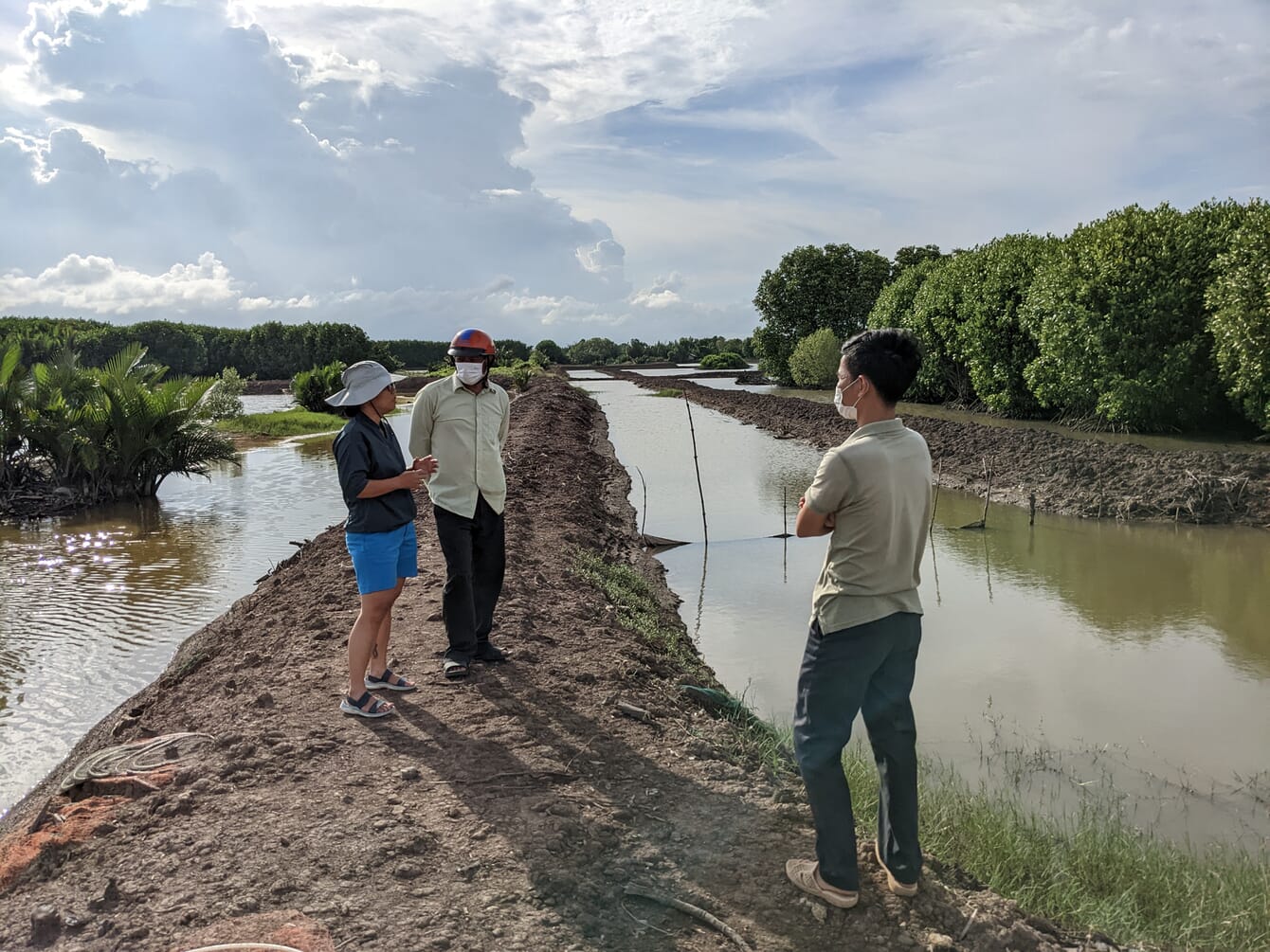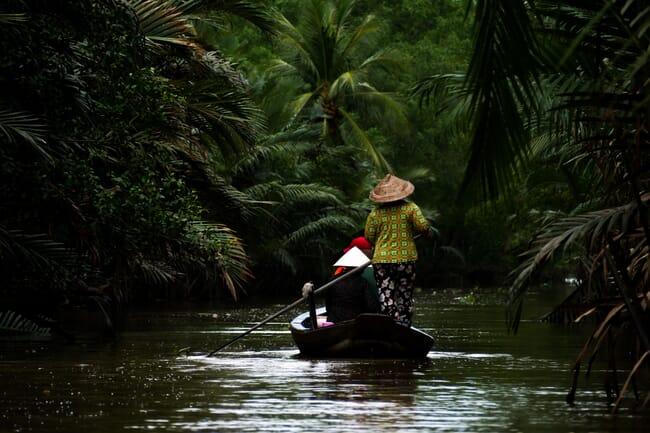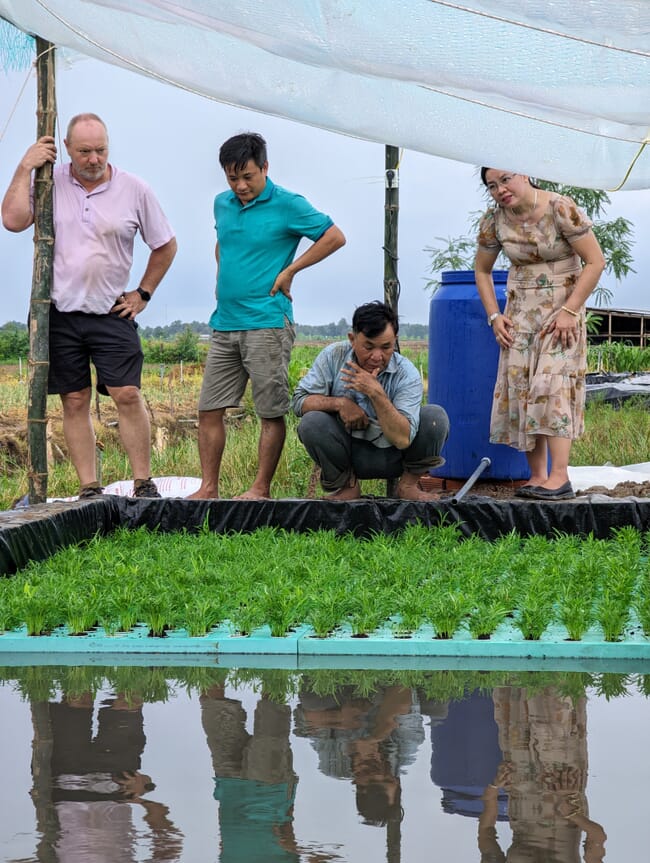
© Kim Delta
Vietnam’s lower Mekong Delta is one of the world’s most productive farming zones, generating 65 percent of the country’s annual aquaculture output and 50 percent of its yearly rice harvest - no easy feat considering Vietnam ranks fourth in global aquaculture output and is the world’s second largest rice producer.
Known by the Vietnamese as the ‘nine-tailed dragon’ after its nine primary outlets, the Mekong is Asia’s equivalent of the Amazon, extending 4,800 kilometers from China, Myanmar, Thailand, Laos and Cambodia, before emptying into the South China Sea through the flatlands of Vietnam.
In Vietnam alone, the Delta encompasses over 1.1 million hectares of fish and shrimp farms. Key seafood exports include whiteleg shrimp (Litopenaeus vannamei), pangasius (Pangasianodon hypothalamus) and Nile tilapia (Oreochromis niloticus). Vietnam’s seafood industry reached its highest export turnover in 2022, exceeding USD10 billion, with the Delta contributing 27 percent to the country’s gross domestic product.
Not all is well, however. The Mekong Delta is slowly being transformed by groundwater extraction, overpopulation, pollution and climate change. Unsolved, this will not just dramatically reduce Vietnam’s productivity, but also threaten local and regional food security. After all, the Mekong is the rice basket of the region.
Nguyễn Kim Thanh and Steven Starmans aim for a more sustainable future for the Delta by working closely with small-scale aquaculture operators and other stakeholders to develop realistic solutions to tackle the region’s most pressing challenges.
The Mekong is sinking
Among the biggest issues faced by residents and fish farmers in the delta is that it is quite literally sinking to new depths yearly.
“The withdrawal of too much groundwater for irrigation, aquaculture, industry and household usage is causing subsidence, the sinking of land,” explains Starmans.
Experts estimate that the delta is sinking by up to four centimetres yearly. It doesn’t sound like much, until you realise much of it sits only one metre above sea level.
“The Delta is being hit from both sides. As it is sinking, it is also being inundated by rising sea levels, which is claiming an additional three millimeters of height yearly,” notes Starmans.
“Human or anthropogenic changes outpace the impacts of climate change by 13:1, so a little over 10 years of sea level rise equals just one year of subsidence - a very important realisation to make in terms of what to focus on,” he adds.

Fish farms on the Mekong face rising sea levels in addition to subsidence
To stop or at least drastically slow down this sinking, farms and communities in the Delta must work together and come up with smart solutions - the specialty of the team at Kim Delta.
“The key is to reduce groundwater extraction by tapping alternative freshwater sources, such as rainwater and graywater harvesting, while also utilising more efficient irrigation methods,” reflects Starmans.
“The culture of freshwater fish and shrimp should also be reconsidered in some parts of the delta. At the very least, efficient production systems should be used to reuse precious resources. Employing recirculating aquaculture systems (RAS) for instance, might help. However, these systems are often costly and are definitely not the best solution for small-scale farmers.”
The soil is disappearing
Another major challenge is sand mining, the commercial extraction of river sand for construction and land reclamation. Sand mining increases downstream water flow as the river becomes deeper, thereby eroding riverbanks. Erosion of once-stable banks is a major problem faced by riverside residents. From 2018 to 2020 alone, 1,808 homes - equivalent to five entire villages - plunged into the Mekong River. More homes will likely be lost yearly. Fish and shrimp farms will need to invest more and more to strengthen and repair their pond dykes.
“People who have lived for generations in the delta know how to minimise erosion by planting and maintaining vegetation like mangrove palms along riverbanks,” says Starmans. “However, this practice is quickly losing ground.”
Salt is creeping in
In the lower delta, tides fluctuate by up to three metres. In the past, high tides brought seawater some 20 to 30 kilometers inland. Largely because of subsidence and changing river hydraulics due to sand mining, the sea is now able to flow over 70 kilometers inland.
Due to excessive sand mining, the amount of sediment in the river has been reduced. This makes it easier for heavier seawater to flow upstream, reaching further inland. In addition, the extraction of too much stored freshwater in underground aquifers leaves vast empty spaces, which can be quickly filled by seawater, particularly in deltas and other low-lying areas near the sea.
Exacerbating this are the relatively long and dry summer months, likely due to climate change. “This generates less physical pressure for freshwater runoff to drive back the influx of the tide,” says Starmans. Current estimates peg seawater intrusion to breach 100 kilometers in the early dry season, literally ‘salting’ the delta.
This poses serious threats not just to aquaculture operators growing freshwater fish like pangasius, carp and freshwater prawns, but also the delta’s rice paddies, as salinity is lethal to most crops. A recent study by Vietnam’s Water Resources Science Institute estimated that the delta is losing USD3 billion yearly in crops due to seawater intrusion, with the most damage done to aquaculture, rice and fruit production, each bearing about 30 percent of the loss.

© Shutterstock
Dam it
The intrusion of seawater and the sinking of land is further increased by the construction of dams and related water infrastructure projects. The Mekong passes through several countries and parts of it have been heavily dammed for hydropower. As of early 2024, 167 power plants are currently producing electricity from its waters.
Most of these dams are in China and Laos, with the largest, Nam Theun-2, generating over a billion watts of electricity. These dams regulate water flow by storing excess water in large artificial lakes, which has resulted in an estimated 30 percent reduction in downstream water flow. Cambodia is also planning the construction of a mega-canal to link the Mekong River in its territory directly to the Gulf of Thailand, further exacerbating the situation.
Though dams are a source of renewable energy, they can drastically affect life downstream. Among the most significant effects are reducing sediments needed to sustain riverine life, preventing fish migration and disrupting the age-old pattern of floods that have shaped life for millennia. Impounding water upstream also reduces a river’s ability to push back the sea, worsening seawater intrusion, while also reducing the availability of freshwater for rice and fish farmers.
Developing simple - but smart - solutions
“In most cases the small farmers seem to be forgotten and left out of the master development plan and the big projects of foreign donors,” notes Nguyễn. “Our company tries to take responsibility by working mainly with small-scale farmers in developing key knowhow and smart solutions to tackle our region’s challenges.”
She believes that all stakeholders should work together to ensure that plans to tackle current challenges in the delta are more inclusive.
“The government has done much in terms of local farming and women’s associations. Each village has one or two associations and they try to be very active.” She still believes the government can do better to ensure that the needs of small-scale farmers are included in the government’s masterplan.
“Large farmers should take more responsibility,” she adds. “Large intensive farmers use many resources of the delta, often creating significant pollution – while living their lives in big cities, far away from the delta.”
However, Nguyễn stresses, this does not exonerate the small-scale farmers from their own responsibilities.
“In the past, there was much more collaboration between farms. They would share water pumps and maintain canals together. During the harvest, farmers would come together and help each other until all work was done. This mentality has slowly disappeared and needs be revived,” she argues.
Nguyễn emphasises that without local collaboration, small-scale farmers will not be able to conquer the grave challenges they are facing.

© Kim Delta
A way forward
A project that follows this approach to the letter is the Mekong Salt Lab – a collaboration between Vietnamese and Dutch companies, educational institutions and local government units to enhance local capacity to adapt to climate change and land subsidence. The project is managed by The Water Agency with the involvement of Kim Delta.
The goal is to further develop expertise on salinity mitigation and adaptation – including freshwater management, plus integrated and adaptive planning – and then to transfer this knowledge to local farmers. Among its many practical and low-cost solutions are adopting water-saving hydroponic culture systems, treating and reusing wastewater and storing excess rainwater in reservoirs, such as spare fishponds, especially useful in diluting the seawater brought in by the tide.
Something the Mekong Salt Lab and Kim Delta are also looking at is the development and use of salt-tolerant varieties and strains for aquaculture producers and farmers of other crops.
“The national government of Vietnam is likely going to phase out of the culture of pangasius, tilapia and giant freshwater shrimp in areas which have been most affected by saltwater intrusion. It is already recommending that farmers focus on marine shrimp instead,” Starmans points out.
Developing salt-water tolerant varieties of species like tilapia is also being considered.

© Kim Delta
A unique farming approach
Nguyễn believes that small-scale local aquaculture operators should consider embracing integrated farming. This approach has existed for thousands of years in the region and combines livestock and fish production with the production of vegetables in the same plot of land, reusing waste streams and minimising external inputs. Many experts agree that this is a more sustainable approach to the production of food, better able to weather unpredictable climate change effects.
Good land and water management skills are also required to keep farms productive, especially for operators working in deltas. Fortunately, Vietnam has wisely retained its traditional farming knowledge.
“Every Vietnamese child learns about integrated closed-loop VAC farming systems in primary school,” explains Starmans.
Vietnam’s age-old VAC system [Vườn, Ao, Chuồng: Vietnamese for garden, pond and livestock area] is a way for small-scale fish and shrimp farmers to spread risk, while veering away from foreign moves to push for monoculture operations focusing on single species, which are typically run by large corporations to edge out smallholder farmers. By not keeping their eggs in one basket, VAC proponents can continue turning a profit, even in changeable conditions.
Indeed, Nguyễn wants to practice what she preaches and develop her own integrated model farm in the middle of the delta – and actually live in it. “With Kim Delta, we are planning to integrate fish production with vegetables and fruits to show local farmers how it can be done sustainably, using some of the solutions we developed.”
“It is not only about knowledge transfer, but also about creating spaces for farmers to get together and unite. Most importantly, we want to give small-scale farmers a voice so they will be heard and will be a strong part of the future of the Mekong Delta.”
What we can learn from the Mekong Delta
Sinking lands, salination and pollution are not just faced by farmers and aquaculture operators in the Mekong – the Irrawaddy Delta of Myanmar, the Chao Phraya River Delta of Thailand, even the Pampanga Delta of the Philippines all face similar problems.
Small-scale fish and shrimp farmers and crop producers will need to work together and unite to be heard and to be part of the future. Only well-planned and coordinated actions will be able to prevent large parts of the region’s deltas from sinking into the abyss.




